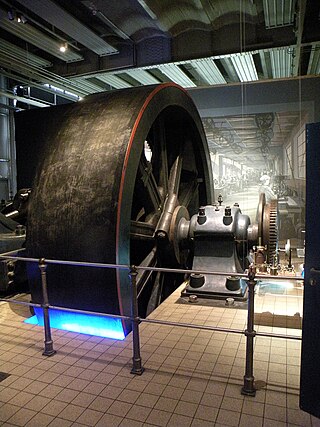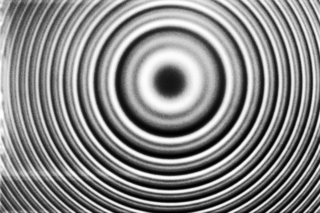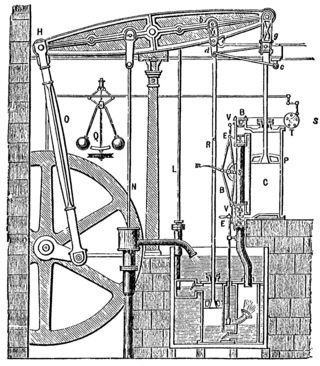For a ring as a measuring tool, Signal/Noise ratio and line widths are all-important. The signal of the ring as a rotation detector is used, whereas the all-pervasive white, quantum noise is the fundamental noise of the ring. Rings with a low quality factor generate additional low frequency noise. [10] The standard matrix methods for the beam characteristics — curvature and width — are given, as well as the Jones calculus for polarization.
Signal-to-noise ratio
The following equations can be used to calculate the signal-to-noise ratio, S/N for rotation.
The signal frequency is
S = Δfs = 4 ,
,
where  is the area vector,
is the area vector,  is the rotation rate vector, λ is the vacuum wavelength, L is the perimeter. (For complicated geometries like nonplanar rings [11] or figure-8 rings, [12] the definitions
is the rotation rate vector, λ is the vacuum wavelength, L is the perimeter. (For complicated geometries like nonplanar rings [11] or figure-8 rings, [12] the definitions
 and L =
and L =  are to be used.)
are to be used.)
The noise frequencies are [13]
N =  ,
,
where  is the one-sided power spectral density of quantum noise, h is Planck's constant, f is the laser frequency, P includes all power losses of the laser beams, and Q is the quality factor of the ring.
is the one-sided power spectral density of quantum noise, h is Planck's constant, f is the laser frequency, P includes all power losses of the laser beams, and Q is the quality factor of the ring.
Line width
Ring Lasers serve as frequency measuring devices. As such, single Fourier components, or lines in frequency space are of major importance in ring outputs. Their widths are determined by the prevailing noise spectra. The major noise contribution is typically white quantum noise [13] If this noise is the only one present, the rms-line width sigma is obtained by corrupting the signal (represented by a δ function) with this noise in the interval 0-T. The result is:

P should be maximized but kept below the level that generates additional modes. Q can largely be increased by avoiding losses (e.g. improving the quality of the mirrors). T is only limited by the stability of the device. T reduces the line width by the classic T−1/2 for white noise.
For low-Q rings, an empirical relation for 1/f noise has been ascertained, with the one-sided frequency power spectral density given by  , with A≃4. It is notoriously difficult to reduce line width in the presence of this noise.
, with A≃4. It is notoriously difficult to reduce line width in the presence of this noise.
To decrease the line width further, long measurement times are necessary. A measurement time of 243 days reduced the σ to 50 nHz in the Grossring.
Beam characteristics
The beam in ring lasers is typically excited by High-Frequency excitation of a laser gas. Although it has been shown that ring lasers can be excited in all kinds of modes, including microwave-related modes, a typical ring laser mode has a Gaussian, closed shape, given proper adjustment of mirror position [14] The analysis of beam properties (curvature radius, width, position of waists, polarization) is done with matrix methods, where the elements of the closed beam circuit, mirrors and distances in between, are given 2 × 2 matrices. The results are distinct for circuits with n mirrors. Typically, there are n waists. For stability, there has to be at least one curved mirror in the circuit. Out-of-plane rings have circular polarization. The choice of mirror radii and mirror separation is not arbitrary.
Curvature radius and width
The beam has a spot size w:  ,
,
where  is the peak field of the beam, E is the field distribution, and r is the distance off beam center.
is the peak field of the beam, E is the field distribution, and r is the distance off beam center.
The mirror sizes have to be chosen large enough to ensure that only very small portions of the gaussian tails are to be cut off, such that the calculated Q (below) is maintained.
The phase is spherical with radius of curvature R. It is customary to combine radius of curvature and spot size into a complex curvature
 .
.
The ring design uses a matrix M1 =  for a straight section and M2 =
for a straight section and M2 =  for a mirror of focus length f. The relation between mirror radius RM and focus length f is for oblique incidence at angle θ, in plane:
for a mirror of focus length f. The relation between mirror radius RM and focus length f is for oblique incidence at angle θ, in plane:
 ,
,
for oblique incidence at angle θ, perpendicular to the plane:
 ,
,
resulting in astigmatic beams.
The matrices have
 .
.
A typical design of a rectangular ring has the following form:


(for the equivalent rays where r = distance of equivalent ray from the axis, r’ = the slope against the axis).
Note that in order for the ray to close on itself, the input column matrix has to equal the output column. This round-trip matrix is actually called ABCD matrix in the literature. [14]
The requirement that the ray is to be closed is therefore  .
.
Propagation of complex curvature
The complex curvatures qin and qout in a section of a beam circuit with the section matrix  is
is
 . In particular, if the matrix above is the round-trip matrix, the q at that point is
. In particular, if the matrix above is the round-trip matrix, the q at that point is
 ,
,
or
 .
.
Note that it is necessary that 
to have a real spot size (Stability Criterion). The width is generally less than 1 mm for small lasers, but it increases approximately with  . For calculation of beam positions for misaligned mirrors, see [15]
. For calculation of beam positions for misaligned mirrors, see [15]
Polarization
The polarization of rings exhibits particular features: Planar rings are either s-polarized, i.e. perpendicular to the ring plane, or p-polarized, in the plane; non-planar rings are circularly polarized. The Jones calculus [14] is used to calculate polarization. Here, the column matrix

signifies the electric field components in-plane and off-plane. To study further the transition from planar rings to non-planar rings, [16] reflected amplitudes rp and rs as well as phase shifts upon mirror reflection χp and χs are introduced in an extended mirror matrix
 . Also, if the reference planes change, one needs to refer the E-vector after reflection to the new planes with the rotation matrix
. Also, if the reference planes change, one needs to refer the E-vector after reflection to the new planes with the rotation matrix
 .
.
Analysis of a skew-square ring by the Jones calculus yields the polarization in a ring. (A skew-square ring is a plane square ring where one mirror is lifted out of the plane of the other mirrors by a (dihedral) angle θ and tilted accordingly.) Following the Jones’ vector around the closed circuit, one gets
 (Note that the polarization at the end of the loop has to equal the polarization at the start). For small loss differences
(Note that the polarization at the end of the loop has to equal the polarization at the start). For small loss differences  and small phase shift differences
and small phase shift differences  , the solution for
, the solution for  is
is
 , where
, where  . If the dihedral angle θ is large enough, i.e. if
. If the dihedral angle θ is large enough, i.e. if
 , the solution of this equation is simply
, the solution of this equation is simply  , i.e. a definitely non-planar beam is (left-handed or right-handed) circularly (not elliptically) polarized. On the other hand, if
, i.e. a definitely non-planar beam is (left-handed or right-handed) circularly (not elliptically) polarized. On the other hand, if  (a planar ring), the formula above results in p or s reflection (linear polarization). A planar ring, however, is invariably s-polarized because the losses of the multilayer mirrors used are always less in s-polarized beams (at the so-called “Brewster angle”, the reflected p-component even vanishes). There are at least two interesting applications:
(a planar ring), the formula above results in p or s reflection (linear polarization). A planar ring, however, is invariably s-polarized because the losses of the multilayer mirrors used are always less in s-polarized beams (at the so-called “Brewster angle”, the reflected p-component even vanishes). There are at least two interesting applications:
1. The Raytheon ring laser. The fourth mirror is elevated by a certain amount over the plane of the other three. The Raytheon ring laser works with four circular polarizations, where now the difference of the differences represents twice the Sagnac effect. This configuration is in principle insensitive to drift. The scheme of detection is also more immune to stray light etc. Raytheon's use of a Faraday element to split internal frequencies introduces however optical 1/f noise and renders the device non-optimal as a gyro.
2. If the fourth mirror is suspended such that it can rotate around a horizontal axis, the appearance of  is extremely sensitive to the mirror's rotation. In a reasonable arrangement, an angular sensitivity of ±3 picoradian or 0.6 microarcsecond is estimated. With a mass suspended on the rotatable mirror, a simple gravitational wave detector can be constructed.
is extremely sensitive to the mirror's rotation. In a reasonable arrangement, an angular sensitivity of ±3 picoradian or 0.6 microarcsecond is estimated. With a mass suspended on the rotatable mirror, a simple gravitational wave detector can be constructed.
Lock-in and pulling
These are new phenomena in rings. The lock-in frequency fL, is the frequency at which the difference between the beam frequencies becomes so small that it collapses, synchronizing the two counterrotating beams. Generally, if the theoretical frequency difference is ft, the actual signal frequency f is
 . This equation says that even slightly above lock-in, there is already a reduction in frequency (i.e. pulling) relative to the theoretical frequency. In the presence of several satellites, only the major signal is pulled. The other satellites have their proper, non-pulled, frequency separation from the major signal. This opens the way to classic precision side-band spectroscopy as is known in microwaves, except that the ring laser has side bands down to nHz.
. This equation says that even slightly above lock-in, there is already a reduction in frequency (i.e. pulling) relative to the theoretical frequency. In the presence of several satellites, only the major signal is pulled. The other satellites have their proper, non-pulled, frequency separation from the major signal. This opens the way to classic precision side-band spectroscopy as is known in microwaves, except that the ring laser has side bands down to nHz.
When the dependence on perimeter L is taken into account for large rings, the relative difference between theoretical output frequency ft and actual output frequency f is inversely proportional to the fourth power of L:
 .
.
This is a huge advantage of large rings over small ones. As an example, small navigational gyros have lock-in frequencies on the order of 1 kHz. The first large ring [6] had a lock-in frequency of about 2 kHz, and the first ring that could measure the Earth's rotation rate had a lock-in frequency of about 20 Hz.






























































